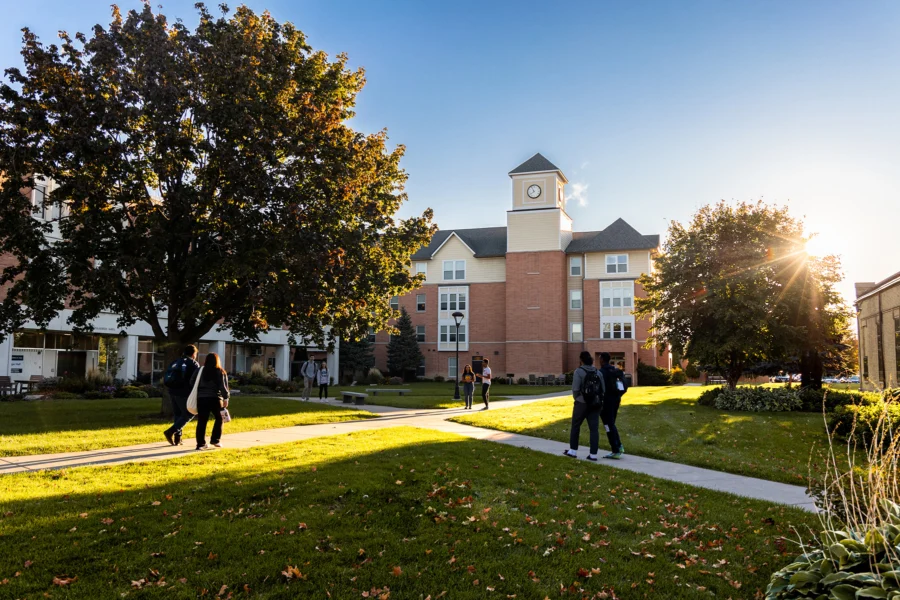When considering higher education, one of the most important decisions prospective students face is choosing between a private university and a public university. Both types of institutions offer unique benefits, and understanding these advantages can help students make an informed decision based on their academic, social, and financial needs. While public universities are often more affordable and have a larger student body, private universities may offer more personalized attention, specialized programs, and a tighter-knit community.
In this article, we will explore the benefits of attending a private university versus a public university, helping you decide which option is best suited for your goals and lifestyle.
1. Cost and Financial Aid
1.1 Public University Benefits
One of the most significant advantages of attending a public university is the lower cost of tuition. Public universities are typically funded by state governments, which helps keep tuition rates lower for in-state students. Additionally, public universities often offer more financial aid options based on need, as well as scholarships for in-state students.
Key Points:
- Lower tuition rates for in-state residents.
- Access to state-funded financial aid and grants.
- Public universities typically offer more scholarships for in-state students.
1.2 Private University Benefits
Although private universities generally have higher tuition rates, they often offer more generous financial aid packages. Many private institutions have substantial endowments, which allow them to provide need-based and merit-based scholarships. Financial aid at private universities can be highly personalized, and some institutions provide full-ride scholarships for high-achieving students.
Key Points:
- Potential for larger, need-based financial aid packages.
- Higher tuition but often offset by institutional scholarships and endowments.
- Private universities can offer more flexibility in financial aid, based on individual circumstances.
2. Class Sizes and Student-to-Faculty Ratio
2.1 Public University Benefits
Public universities typically have a larger student body, which means that class sizes tend to be bigger. While this may be seen as a drawback by some students, it can be beneficial for those who prefer a more independent learning style. Larger class sizes can foster diverse discussions and provide the opportunity to learn from peers with a wide variety of perspectives.
Additionally, the larger student body means public universities often offer a broader range of courses and programs, giving students more options in terms of academic pursuits.
Key Points:
- Larger class sizes, which may encourage self-reliance.
- Exposure to a broad range of perspectives and ideas due to a diverse student body.
- A wider variety of courses and academic programs.
2.2 Private University Benefits
Private universities, in contrast, tend to have smaller class sizes and a lower student-to-faculty ratio. This allows for more personalized attention and closer relationships with professors. Smaller classes encourage more direct interaction, which can lead to a more engaged and collaborative learning environment. For students who thrive in intimate settings, this could be an attractive benefit.
Key Points:
- Smaller class sizes, with more opportunities for individualized attention.
- Closer relationships with faculty members and mentors.
- A more personalized learning environment.
3. Academic Quality and Programs
3.1 Public University Benefits
Public universities often have well-established academic reputations and offer a wide array of programs and disciplines. These institutions frequently benefit from state funding, which can help support research programs, resources, and facilities. Public universities are also more likely to offer professional degrees in fields such as law, medicine, and engineering, often with substantial faculty research backing.
Additionally, public universities may have strong connections with industries and government organizations, providing students with internships, job placements, and research opportunities.
Key Points:
- Established academic programs and strong research opportunities.
- More options for specialized degrees and professional programs.
- Strong industry connections for internships and job opportunities.
3.2 Private University Benefits
While private universities may not have the same vast range of programs as public institutions, they often excel in specialized or niche areas. Many private universities are known for their unique academic offerings, often with a focus on liberal arts, specialized fields, or interdisciplinary studies. Private institutions also tend to emphasize the quality of teaching, student engagement, and research opportunities.
Some private universities are also renowned for their strong alumni networks, which can help open doors for students after graduation.
Key Points:
- Specialized programs and unique academic offerings.
- Smaller, more focused academic environment.
- Strong alumni networks that provide career support and opportunities.
4. Campus Environment and Culture
4.1 Public University Benefits
Public universities typically have a more diverse student body, both in terms of geography and demographics. With large student populations, there is a wider variety of campus organizations, clubs, and activities that cater to many different interests. Students at public universities may have access to a broader range of social opportunities and cultural events.
Moreover, public universities often have a large and active sports culture, with varsity teams that compete at high levels. Students at these universities may enjoy attending games, participating in campus traditions, and being part of a larger school spirit community.
Key Points:
- Large, diverse student body with various clubs and activities.
- Access to a broader range of campus events and cultural experiences.
- Strong sports culture and school spirit.
4.2 Private University Benefits
Private universities often offer a more close-knit, community-oriented campus culture. With smaller student populations, there may be a stronger sense of camaraderie and personalized attention. Students at private universities might find it easier to build close friendships, join student organizations, and take leadership roles in clubs.
Private universities also tend to focus on creating a more intimate campus environment, with smaller social groups and close connections between students, professors, and staff.
Key Points:
- Strong sense of community and tighter-knit campus culture.
- Easier to build close friendships and get involved in campus organizations.
- Greater emphasis on student involvement and personal development.
5. Networking and Alumni Connections
5.1 Public University Benefits
Public universities often have a large and diverse alumni network, especially if they are well-established and have been around for many years. Graduates from these universities can benefit from a broad network of professionals across various industries. The size and diversity of public universities’ alumni base often provide students with more networking opportunities in different regions and sectors.
Additionally, many public universities have partnerships with corporations, government agencies, and nonprofits, offering students direct access to internships, job placements, and mentoring opportunities.
Key Points:
- A large, diverse alumni network across various fields and industries.
- Strong regional and national connections to employers and industries.
- Opportunities for internships and job placements through university partnerships.
5.2 Private University Benefits
Private universities are often known for having a strong, loyal alumni network, which can provide students with exclusive networking opportunities. Graduates from prestigious private universities may have access to highly influential alumni in a variety of fields, including business, politics, law, and the arts.
Because private universities tend to have smaller student populations, alumni often feel a stronger connection to their alma mater and are more likely to mentor or support current students. Additionally, private institutions may have more personalized career services to help students connect with potential employers.
Key Points:
- Strong alumni networks that can open doors for career opportunities.
- Exclusive networking opportunities with influential graduates.
- More personalized career services and mentorship opportunities.
6. Flexibility and Opportunities for Personal Growth
6.1 Public University Benefits
Public universities offer a wealth of opportunities for personal growth due to their large and diverse student populations. Students have the chance to meet people from various backgrounds and engage in a variety of extracurricular activities. Public universities also offer a wide range of courses and academic disciplines, allowing students to explore their interests and passions before committing to a specific field of study.
Key Points:
- A diverse student body allows for a broad social experience.
- Numerous extracurricular activities, clubs, and events for personal development.
- Greater flexibility in choosing academic majors and minors.
6.2 Private University Benefits
Private universities often emphasize personalized student development, with a focus on cultivating leadership skills and critical thinking. The smaller, more intimate environment provides students with more opportunities to engage with professors and peers, leading to a more tailored and enriching experience. Additionally, the strong focus on academics and extracurricular involvement fosters personal growth and self-discovery.
Key Points:
- Emphasis on personalized development and leadership skills.
- Smaller, more tailored environment for academic and personal growth.
- Close relationships with faculty members and peers.
Conclusion
Choosing between a private university and a public university ultimately depends on your personal preferences, academic goals, financial situation, and desired campus experience. Public universities tend to offer lower tuition rates, a diverse and large student body, and a wide variety of academic programs. They are well-suited for students who enjoy a larger, more independent learning environment and want access to a broad range of resources and opportunities.
On the other hand, private universities offer smaller class sizes, personalized attention, and a strong sense of community. They can be ideal for students who value a more intimate learning environment, have specialized academic interests, or are seeking strong alumni connections.
Both types of institutions can provide an excellent education, so it’s important to weigh the benefits and risks of each option based on what matters most to you. Consider factors such as cost, campus culture, academic offerings, and long-term career goals before making your decision.




